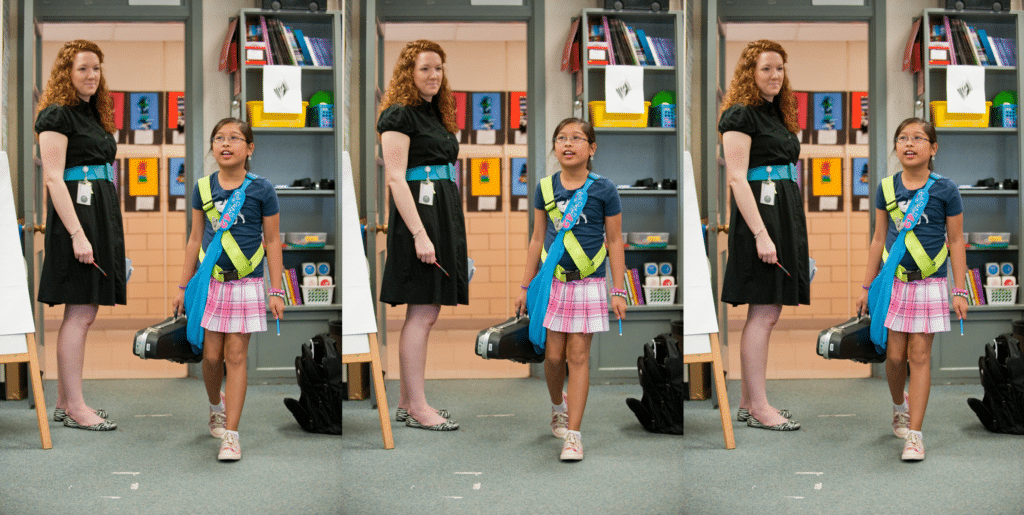
Where are you when students arrive in the morning? At your teacher desk looking at paperwork from the office? At the projector setting up a video you’ll be showing later that morning?
I like to station myself in my customary position at the door, ready to greet each student as they arrive. I notice Chase looking a bit glum and offer her a gentle fist bump along with a “Good morning, Chase. It’s so great to see you. How are you this morning?” To Brendan, who bounces through the door with a cheerful “Good morning, Mr. H!” I give an enthusiastic high-five that matches his high energy. As I greet student after student, I’m not only welcoming them to our day together, but I’m gathering vital information about their mood and readiness for learning.
I’ve learned, throughout my years using the Responsive Classroom approach, that building community starts the moment students enter the room. Given that we all have lives outside school, it can be tough to predict what kind of mood students will arrive in. Some may have missed breakfast. Some may have been hurried or had an otherwise challenging morning.
That’s why greeting each one at the door is so important. I’ve found that a simple and heartfelt greeting like what I offered to Chase and Brendan has a positive effect on any scenario that may have left a student feeling a bit upset or grumpy. But I don’t stop there.
Phase 2 of my arrival time routine is to mill about the room gathering more information. As the children are putting away jackets and backpacks and settling into their morning routine, I walk around asking each student about their morning, their evening, or both. I offer a comment, noticing a new haircut or new sneakers while further assessing students’ moods and catching any preoccupations.
For example, following up on Chase’s reply of “Uh . . . I’m okay” at the door, I now give her a chance to say more if she’d like. “So, you’re just okay?” I ask her. “What’s up?” She then informs me that she only had an apple for breakfast because there wasn’t enough milk for cereal and they were running late. I dash to the cafeteria to nab a bagel and cream cheese. Crisis averted.
I find that I’m frequently heading off such problems during this check-in phase. I’ve heard nervous stories about mom or dad going away on a trip. On a few occasions, I’ve learned about the death of a family member or a pet. These are things that impact students’ daily flow—or focus—significantly.
The situations are not always that deep, of course. Some children just appreciate the chance to tell about a funny thing that happened the previous evening. Some may want to share about the special thing they’re looking forward to doing later that day or week. Regardless, when students hear me asking how they are—and see me waiting for their real response—they feel a sense of belonging and safety, which clears the way for fruitful learning.
Earl Hunter II is a certified Responsive Classroom presenter and consultant and a featured contributor to the book Teaching Self-Discipline.